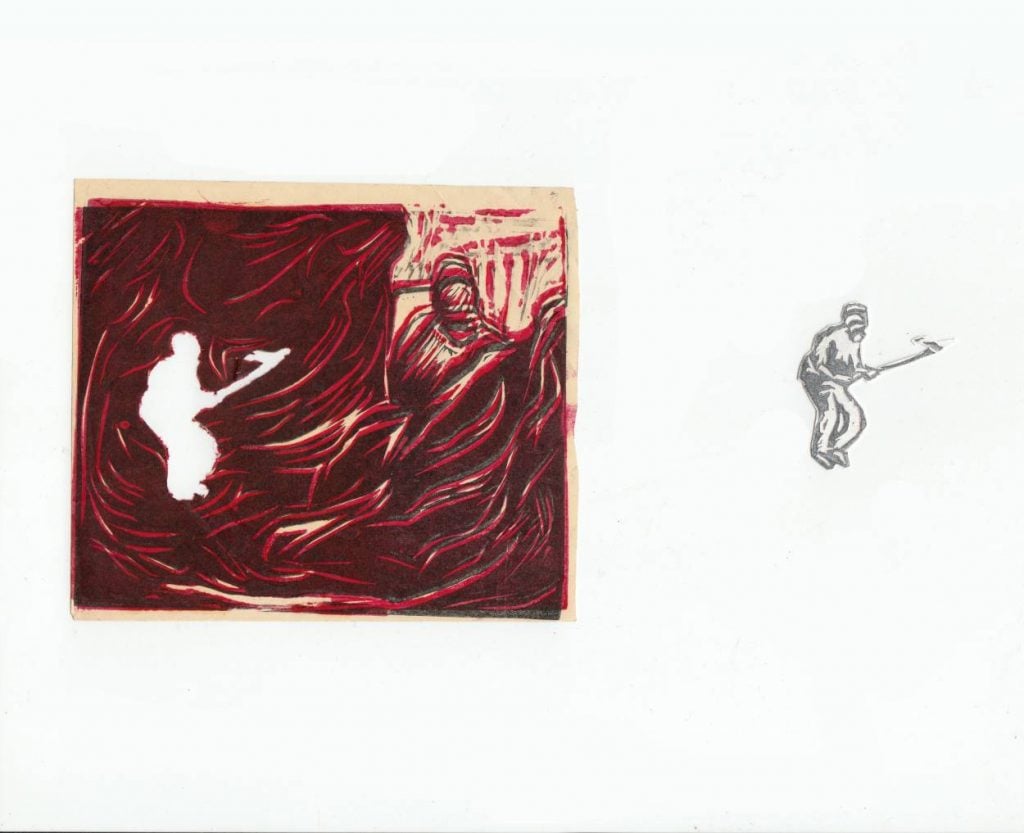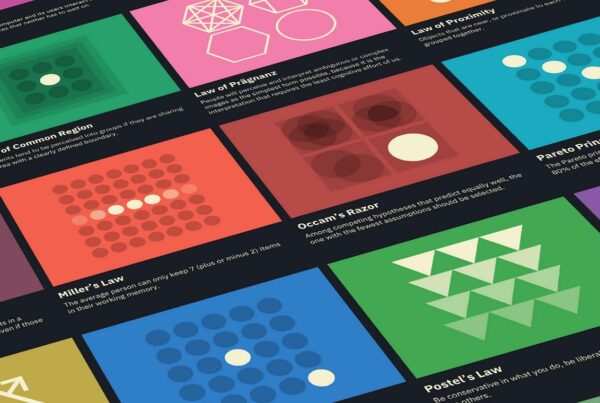Block printing, or relief printmaking, is a captivating and historic art form that has influenced artists for centuries. The technique involves carving an image into a block, inking the raised surface, and pressing it onto paper or fabric to create bold, impactful designs.
This article delves into the art of block printing and various relief methods, exploring its history, techniques, and materials, and highlighting its relevance in both traditional and contemporary art. Whether you’re a seasoned artist or a beginner, you’ll discover the fascinating world of printmaking and the skills needed to create striking works of art.
For those interested in a more specific guide on lino printing, refer to our comprehensive lino printing process guide here.
Table of Contents
The Art of Block Printing
Block printing is a form of relief printing where the artist carves a design into a block of material. The areas that are left raised after carving are inked and then pressed onto a surface to create a print. This subtractive method allows artists to reproduce the same image multiple times, giving rise to editions of prints.
Block printing is celebrated for its bold lines, striking contrasts, and repeatability. It can be used on paper, textiles, and various other surfaces, making it versatile for both artistic and practical applications.
A Journey Through History
Block printing boasts a rich history that spans thousands of years. Its origins can be traced back to ancient China, where it was used to print Buddhist texts and illustrations. The technique spread throughout Asia and later made its way to Europe, where it became a pivotal art form during the Renaissance. Artists like Albrecht Dürer perfected the woodcut technique, which allowed for intricate designs and widespread artistic expression.
For a more in-depth exploration of the historical evolution of relief printing, be sure to check out our article on masters of traditional printmaking. It covers influential artists and their techniques, giving you insights into the development of printmaking from past to present.
Common Types of Block Printing
While there are many types of relief printmaking, two of the most well-known methods are woodcut and linocut, though modern variations such as rubber stamping and stamp making are also popular among hobbyists and crafters.
Woodcut Printing
Woodcut is one of the earliest forms of relief printing, originating in China before spreading to Europe. Artists carve into a block of wood, removing the areas that will not be printed. The raised surfaces are then inked and pressed onto paper.
This technique often results in bold, graphic images with a distinct texture, influenced by the grain of the wood itself.
Linocut Printing
Linocut, a more modern variation of block printing, uses linoleum instead of wood. The process is similar, but linoleum offers a smoother surface and is easier to carve, making it a popular choice for beginners and professional artists alike.

If you’d like to dive into the step-by-step process of lino printing, explore our lino printing process guide for a detailed breakdown of the tools, materials, and techniques required.
Rubber Stamping and Stamp Making
Rubber stamping is a form of relief printing that has evolved from traditional block printing. In this method, artists carve designs into rubber blocks or use pre-made stamps. The raised design is then inked and pressed onto paper or fabric, much like woodcut or linocut printing.
Stamp making allows for more personalised, small-scale designs, ideal for crafting or adding unique touches to projects like invitations, journals, or scrapbooks. The tools and materials for stamp making are affordable and accessible, making it an easy entry point for beginners who are interested in relief printmaking but may not have the equipment for larger projects like woodcuts or linocuts.
Rubber stamps are also often used in commercial applications for branding or packaging design, proving how versatile this form of block printing can be.
Contemporary Voices in Printmaking
Relief printmaking is not just a historical art form; it continues to thrive today. Many contemporary artists are pushing the boundaries of traditional techniques, incorporating modern themes and experimental approaches into their work.
For an insightful look at how today’s artists are shaping the printmaking landscape, we recommend reading our article on contemporary voices in printmaking. It highlights the innovative approaches of modern printmakers and how they continue to breathe new life into the medium.
Tools and Materials for Block Printing

To get started with block printing, you’ll need a few essential tools and materials:
Tools:
- Carving Tools: Gouges and chisels in various sizes for cutting into the block.
- Block Material: Traditionally wood, but linoleum is a common alternative. For stamp making, rubber blocks are also used.
- Ink: Relief printing ink, available in both oil-based and water-based forms.
- Brayer: A roller used to apply ink evenly across the surface of the block.
- Paper: Thin, absorbent paper or specialised printmaking paper works best for relief prints.
Optional Tools:
- Baren: A hand tool used to press the paper onto the block, although a wooden spoon can work as a substitute.
- Printing Press: For more advanced printmakers, a printing press can ensure consistent pressure and professional results.
For a full list of recommended materials, visit our lino printing kits page, where we offer curated supplies perfect for all skill levels.
Masters of Traditional Printmaking
Over the centuries, many artists have contributed to the rich tradition of relief printmaking. These masters not only perfected the craft but also pushed the boundaries of what block printing could achieve.
Our article on masters of traditional printmaking delves into the lives and works of some of the most influential artists in this field, such as Albrecht Dürer and Katsushika Hokusai.
The Enduring Appeal of Printmaking
Printmaking has always been a versatile and expressive medium. Its tactile nature, bold contrasts, and ability to produce multiples make it both accessible and rewarding for artists. Today, printmakers continue to find new ways to work with traditional methods, ensuring that relief printmaking remains a vibrant and evolving art form.
If you’re interested in learning more about the fundamentals of printmaking, we invite you to read our article What is Printmaking?, where we cover the basics and explore different forms of printmaking beyond relief techniques.
Conclusion
Block printing and relief printmaking are art forms steeped in history and full of creative potential. From the intricate carvings of woodcut to the smooth lines of linocut, and the personalised charm of rubber stamping and stamp making, these methods offer artists a way to create bold, dynamic images with endless possibilities.
Whether you’re inspired by the traditional masters or the contemporary innovators of the craft, there’s no better time to explore the world of printmaking for yourself. Be sure to visit our lino printing process guide to get started on your own printmaking journey!
Featured Linocut Guides
Check Out Our In Depth Lino Printing Guides













